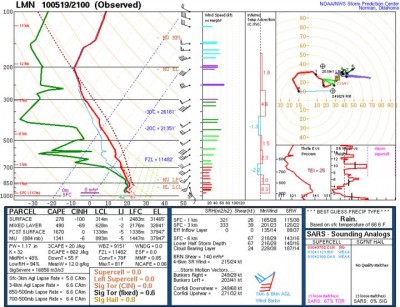
Sondes were launched on these days to gather atmospheric data when areas in Oklahoma and Kansas showed the potential for severe weather. These data will be critical for helping scientists to understand the severe weather outbreak that began in Oklahoma and Kansas on May 10. There were over 25 tornadoes in the area on that day, with significant property damage in central Oklahoma and numerous reports of high winds and large hail. Conditions calmed down on the 11th, although some severe storms did form in northwest Oklahoma, then picked up again on the 12th, as severe weather, including a few tornadoes, spread all over Oklahoma and up into Kansas. The 19th also saw widespread severe weather, again with tornadoes, mainly in central Oklahoma.
The campaign’s goal is to develop improved storm predictions and reduce the threat that severe weather poses to life and property. This year’s campaign represented the second season of collaboration between ARM and VORTEX2. The final leg of the VORTEX2 campaign began on May 1, 2010, and was completed on June 15, 2010. For more details about storm reports issued during the campaign, look for “Past Storm Reports” on the Storm Prediction Center website and enter the dates of interest.

